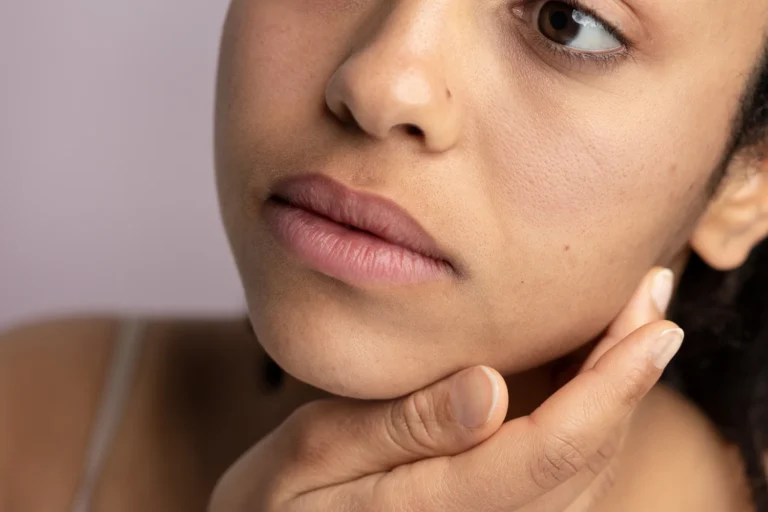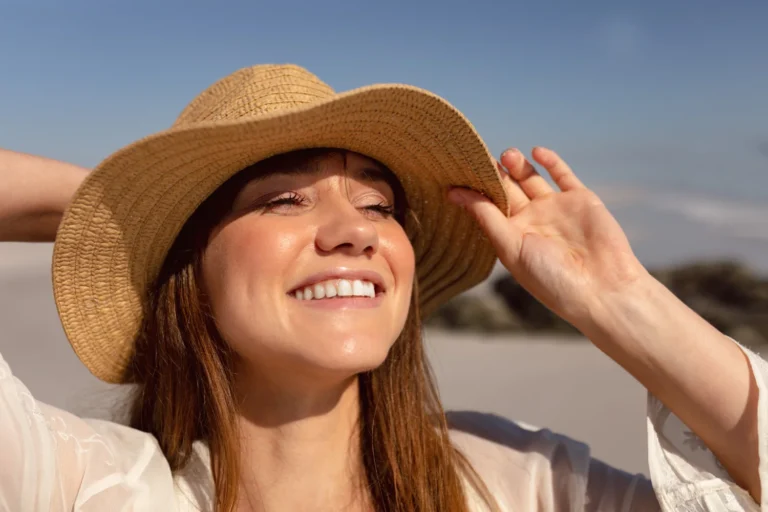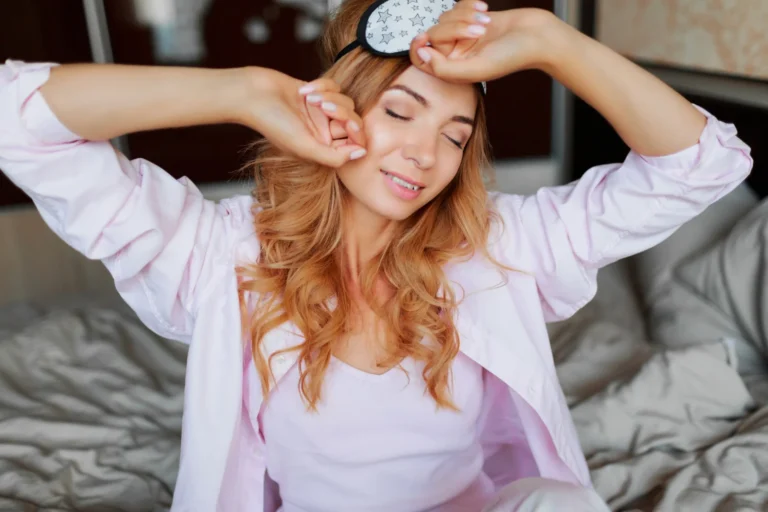Green Veins vs. Blue Veins: What’s the Difference?
Have you ever taken a moment to observe your arms or legs and noticed those delicate, meandering lines just beneath your skin’s surface? Those intricate networks are your veins, the often-overlooked champions of your circulatory system! But have you ever pondered the difference between green veins and blue veins? Let’s delve into the fascinating realm of Green Veins vs. Blue Veins and unravel the mysteries behind their varying colors.
Understanding Veins: The Basics
Before we dive into the colors of veins, let’s talk about what veins actually do in our bodies. Veins are like the highways that carry blood back to the heart. But here’s the twist: they carry blood that’s already delivered oxygen to your body’s tissues and organs and needs a refill of oxygen. It’s kind of like a delivery truck making a return trip for more goods!
Now, veins come in all shapes and sizes and spread throughout your body. Some are near the surface of your skin, while others are deeper inside, nestled among your muscles. But no matter where they are, each vein has an important job: making sure your blood keeps moving smoothly around your body to keep you healthy and feeling good. So, next time you see those veins peeking through your skin, remember that they’re working hard to keep everything running smoothly inside.
Cracking the Color Code: Why Do Veins Look Different?
You may have noticed that veins don’t always look the same. Sometimes they appear green, while other times they seem blue. The truth is, the color of your veins is influenced by various factors, including the depth of the vein, the thickness of your skin, and even the amount of fat and tissue surrounding the vein.
The Color Conundrum: Green Veins vs. Blue Veins
Okay, let’s dive into something fascinating—the color of our veins! Have you ever noticed how some people look green while others appear blue? It’s like a little mystery hiding beneath our skin. But don’t worry, we’re here to uncover the secrets behind it!
So, here’s the scoop: Both green and blue veins are actually the same color—blue! But here’s where it gets interesting: It’s all about how light plays tricks on our eyes. Let’s break it down:
Blue Veins: You’ve probably seen veins look blue, right? Well, that’s because our skin loves soaking up red and yellow light, but blue light can sneak through. So, when it bounces back to our eyes, it’s mostly blue, making our veins appear bluish too!
Green Veins: Now, here’s the fun part! Green veins often pop up in people with fair skin. It’s all thanks to a little thing called light scattering. When light hits our skin, it bounces around, and some of it reflects back. In people with fair skin, this mix of blue veins and a hint of yellowish skin tone can create a cool greenish hue.
So, there you have it! The color of your veins might seem like a puzzle, but it’s just nature playing tricks on us. Pretty cool, huh?
Why Do Veins Look Different?
Underneath your skin, green and blue veins might seem the same. But when light hits them, something special happens!
Here’s the trick: Warm undertones make your veins look green, while cool undertones make them look blue. It’s like your veins are sending a secret message through your skin.
So, next time you see those veins, remember—they’re not just veins; they’re telling a story about you. Whether you’re warm and sunny, cool and breezy, or somewhere in between, let your veins be part of what makes you uniquely you!
Where Do We Spot These Veins?
You can spot those vibrant green veins in various places:
- Backs of Hands: Take a look at your hands, and you’ll see those delicate green veins peeking through.
- Shins: Check out your shins; you’ll find those graceful green lines making an appearance.
- Thighs: Cross your legs and take a peek—you might just catch a glimpse of those green veins saying hello.
- Abdomen: Underneath the surface, intricate patterns of green veins may weave their way across your abdomen.
- Chest: Some lucky folks sport green veins on their chest too.
- Forehead and Neck: Even our forehead and neck can join in the vein parade!
Thin-skinned areas like the wrists and eyelids often harbor these colorful veins. As we age, our skin becomes thinner, making the veins more noticeable. But don’t fret—enjoy them! They’re just another beautiful part of your unique canvas!
Factors Affecting Vein Color
Now that we’ve talked about why veins might look green or blue, let’s see what can make them change color:
- Skin Tone and Thickness: If you have lighter skin, your veins might appear more prominent and have a bluish or greenish tint. That’s because lighter skin lets more light through, making the veins more visible. On the other hand, if you have darker skin, the melanin in your skin absorbs more light, making your veins less noticeable.
- Age: As we get older, our skin naturally becomes thinner and loses elasticity. This can make veins more visible and alter their perceived color. Plus, changes in blood flow and vein structure that come with age can also affect how your veins look.
- Hydration Levels: Have you ever noticed that your veins seem more pronounced when you’re dehydrated? That’s because dehydration makes your blood more concentrated, making your veins stand out more. On the flip side, staying hydrated can plump up your skin and make your veins less visible.
- Physical Activity: Engaging in physical activity can temporarily increase blood flow, causing your veins to dilate and become more visible. So, don’t be surprised if your veins seem to pop out more when you’re working up a sweat!
- Medical Conditions: Certain medical conditions, like varicose veins or venous insufficiency, can cause veins to become enlarged, twisted, or discolored. These conditions can affect the color and appearance of your veins and may require medical attention.
Should You Be Concerned About Visible Blue or Green Veins?
If you notice your blue or green veins bulging or causing pain, it could be a sign that it’s time to see one of our vein specialists. Bulging veins might indicate the early stages of venous insufficiency. This condition arises when the valves in your veins weaken and malfunction, allowing blood to flow backward and accumulate in the veins. This leads to the stretching and dilation of the vein walls.
Here are some signs of vein insufficiency that you should keep an eye out for:
- Itching and Burning Sensations: If you experience persistent itching or burning sensations in your legs, it could be a symptom of venous insufficiency.
- Leg Ulcers: Open wounds on the legs, known as leg ulcers, can develop as a result of venous insufficiency. These ulcers may be painful and require medical attention.
- Fatigue or Heaviness in Legs: If your legs feel tired, heavy, or achy, especially after prolonged periods of standing or sitting, it could be due to poor circulation caused by venous insufficiency.
- Leg Cramps: Cramping in the legs, particularly at night, may be a sign of venous insufficiency. These cramps can be uncomfortable and disruptive to sleep.
- Restless Legs Syndrome: Restless legs syndrome is characterized by an uncontrollable urge to move the legs, often accompanied by uncomfortable sensations. It can be a symptom of venous insufficiency.
- Eczema: Skin conditions like eczema may develop as a result of venous insufficiency. These skin changes can cause itching, redness, and inflammation.
- Visible Veins: Both varicose veins and spider veins are common manifestations of venous insufficiency. If you notice pronounced blue or green veins that seem to be getting larger over time, it’s essential to seek medical advice.
If you observe any of these signs, we recommend consulting a vein specialist at your nearest vein clinic. Visible bulging veins can lead to inflammation in the lower legs, increasing the risk of complications such as deep vein thrombosis (DVT) or venous ulcers. Addressing the underlying vein disease is crucial for effective treatment and preventing further complications.
Understanding Vein Disease: Causes, Symptoms, and Treatment Options
Vein disease, also called venous disease or venous insufficiency, happens when your veins aren’t working as well as they should. This usually occurs when the valves inside your veins, which help keep blood moving in the right direction, become weak or damaged. When this happens, blood can pool in the veins, making them swell up and get bigger. Vein disease can show up in different ways, like varicose veins, spider veins, or chronic venous insufficiency (CVI).
Varicose veins are those big, twisted veins that you might see bulging out under your skin, especially in your legs and feet. They can feel uncomfortable, heavy, or achy, especially if you’ve been standing or sitting for a long time. Spider veins, on the other hand, are smaller and look like little red, blue, or purple lines. They’re usually harmless, but they might bother you if you’re worried about how they look.
Chronic venous insufficiency is a more serious type of vein disease. It causes ongoing swelling in your legs, changes to your skin, and sometimes even leg ulcers. This happens when weak veins keep letting blood flow the wrong way, putting extra pressure on your veins and causing damage to the tissues around them. If left untreated, CVI can really affect your quality of life, and you might need medical treatment to stop it from getting worse.
Some things can increase your chances of getting vein disease, like genetics (stuff you inherit from your family), getting older, being overweight, being pregnant, sitting or standing for a long time, or not moving around enough. While you can’t change some of these things, like your genes or your age, you can still do things to lower your risk or make your symptoms better. This includes keeping a healthy weight, staying active, not sitting or standing still for too long, raising your legs when you rest, wearing compression socks, and seeing a doctor if you notice any signs of vein disease.
Treatment for vein disease depends on how bad it is and what type you have. At first, your doctor might suggest simple things like changing your lifestyle, using compression therapy, or keeping your legs raised. If your condition is more serious, you might need procedures like sclerotherapy, endovenous ablation, or vein stripping. These treatments can help fix or close off the veins that aren’t working right and get your blood flowing properly again.
Overall, vein disease is pretty common, but the good news is that it can be treated. By knowing what causes it, what symptoms to look for, and what treatments are available, you can take steps to manage your condition and keep your veins healthy. If you think you might have vein disease or notice any symptoms like leg pain, swelling, or weird-looking veins, it’s important to talk to your doctor. Getting help early can stop things from getting worse and make sure you stay feeling good.
Additionally Preventing and Managing Green and Blue Veins
Taking care of our veins is key to keeping our circulatory system in tip-top shape. Here are some friendly tips to help you keep your veins happy and healthy:
- Get moving: Regular exercise boosts circulation and helps prevent blood from pooling in your veins.
- Elevate those legs: Giving your legs a little lift above heart level can help reduce swelling and improve blood flow.
- Rock those compression socks: Compression socks apply gentle pressure to your legs, which can help improve circulation and reduce the risk of varicose veins.
- Drink up: Staying hydrated keeps your blood flowing smoothly and helps maintain healthy veins.
- Chow down on a balanced diet: Eating a diet rich in fiber, antioxidants, and vitamins supports
overall cardiovascular health and keeps your veins happy.
Final Thoughts
To sum up, the differences between green and blue veins boil down to how light plays with our eyes. Even though veins might look different in color, they’re all part of the same hardworking system that keeps us alive and kicking.
So, the next time you see your veins, take a moment to appreciate the incredible machinery inside your body. Whether they’re green, blue, or somewhere in between, your veins showcase the amazing complexity of human biology.








